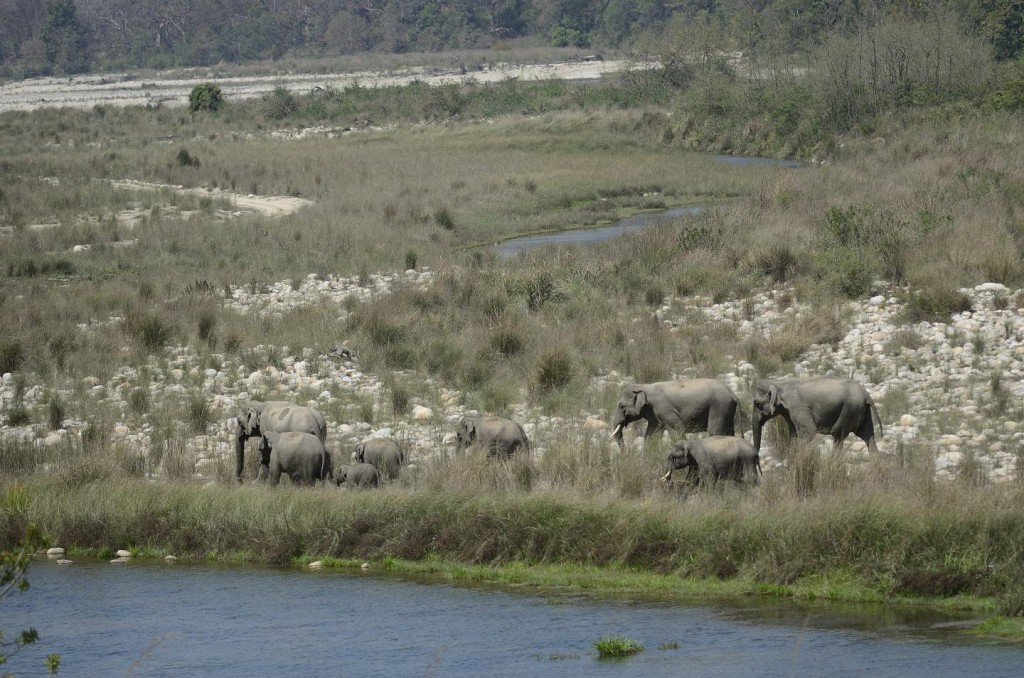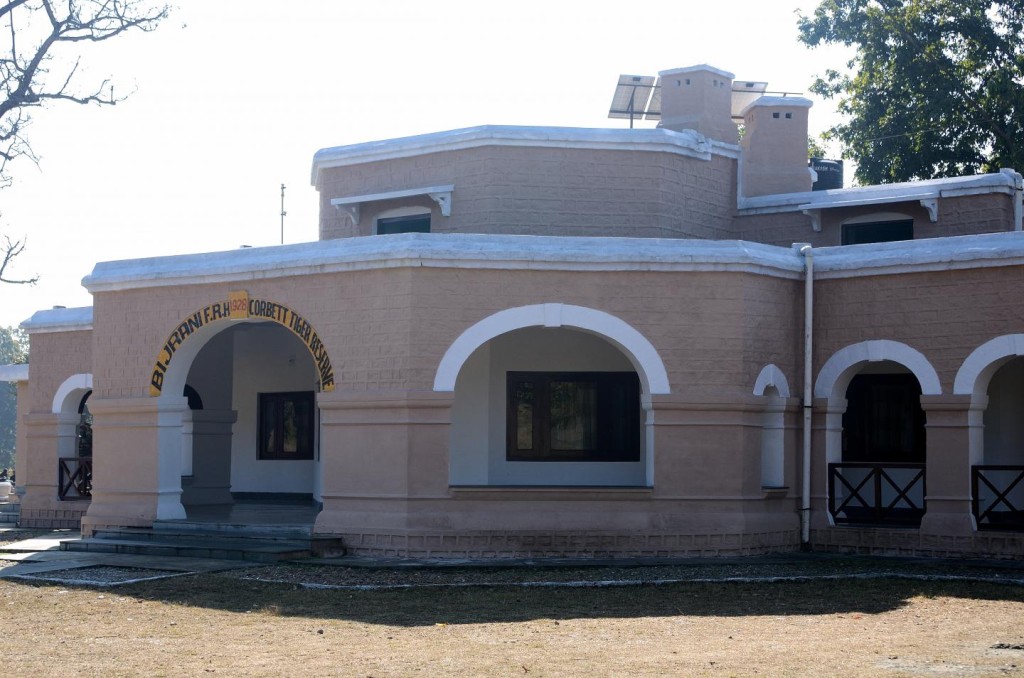Corbett Tiger Reserve
For any true wildlife lover who visits Corbett National Park, it sooner or later becomes an addiction. If you sit back and think about it, sometimes you wonder, why! Sightings of wildlife, including the tiger, are often more difficult here than in other national parks. Then why does it lure you back time and again?! Is it the beautiful landscape and scenery? Is it the fact that you actually have to try and outwit the animals to get to see them? Is it the warmth of the people looking after the park? Or is it proximity to a major city serving as a hub? I guess the answer to the question is “all of the above”.
The reserve, spread across 1,300 sq kilometers is nestled between the Himalayan foothills in the north and the ancient Shivaliks in the south. The altitude varies between 385 to 1,200 meters above mean sea level. This location and variation in altitude results in extreme variations in temperatures too. In winters this can go down to 4 degrees at night and the maximum in summers can rise to as high as 42 degrees. Rainfall during the monsoon on an average is between 1,400 mm-2,800 mm, falling mostly between the months of June and September. The dense moist deciduous forest mainly consists of sal, haldu, pipal, rohini and mango trees.


Corbett National Park is formed mainly by three ridges running parallel to each other and in the east-west direction. The northern most ridge is the highest of the three and houses the Kanda Forest Rest House, located at the highest point in the park, 1,085 meters above sea level. This northernmost and the central ridge are bifurcated by the Ramganga river. This central ridge is the most popular and also the most visited part of the park – this is known as the Dhikala zone and entry is through the Dhangarhi gate. It houses the famous rest houses of Dhikala, Khinanauli, Sarapduli, Gairal and Sultan. Dhikala is located at the park’s lowest altitude of 385 meters.
The southern most ridge, which is very close to the closest town Ramnagar, is known as the Bijrani zone – entry into this zone is through the Amdanda gate. It houses the Bijrani and Malani forest rest houses. If one goes down the northern side of the northern ridge, you will come upon a forest road running through the reserve forest area. This area houses the rest houses of Lohachaur, Rathuadab and Mundiapani, This forest road stretches from the Vatanvasa gate at the western extreme to the Durgadevi gate between Mohan and Marchula in the east.
Jim Corbett National Park, or just “Corbett”, has a long history behind it. It also has the unique honour of being India’s first national park. In 1936 Sir Malcolm Hailey, then Governor of the United Provinces, allocated an area of 256 sq km for the national park. The park was named after him as “The Hailey National Park” on August 8th 1936. In 1952, the park’s name was changed to “The Ramganga National Park”, as a tribute to the life-giving river that runs through the entire length of the park. Then in 1957, the park was once again renamed “Corbett National Park” after the legendary Jim Corbett, the hunter turned conservationist, who probably understood the area and it’s inhabitants, man and animal, better than anyone else. He had also helped in the setting up of the park and it’s boundaries. His books, almost all of which were based in and around this area, have enthralled many a generation and given birth to many a naturalist.
Corbett National Park then came even more into prominence in the 1970’s after realization dawned upon the country that the extinction of the Indian tiger was a definite possibility. The help of the World Wildlife Fund was sought to help activate the far thinking “Project Tiger”. This project was launched at the Dhikala Forest Rest House on April 1st 1973. Since then, there has been no looking back for Corbett National Park, which is still considered one of the prime National Parks of the country.
Corbett National Park then came even more into prominence in the 1970’s after realization dawned upon the country that the extinction of the Indian tiger was a definite possibility. The help of the World Wildlife Fund was sought to help activate the far thinking “Project Tiger”. This project was launched at the Dhikala Forest Rest House on April 1st 1973. Since then, there has been no looking back for Corbett National Park, which is still considered one of the prime National Parks of the country.
Flora & Fauna
Flora
A majority of the vegetation in Corbett consists of Sal trees (Shorea robusta), mainly in the lower regions. The higher regions have a larger variety of plants and trees. Some of these are the Chir (Pinus roxburghii), anauri (Legestroemia paruiflora) and Bakli (Anogeissus latifolia). Also found in various parts of the park are many different varieties of bamboo. One plant, (actually a weed) which is a major irritant to the park authorities and is widespread in the jungle is the Lantana. The park authorities, as well as the rest of the vegetation, are fighting a constant battle against this weed choking up the entire jungle floor.
Fauna
Among a huge variety of animals, birds and reptiles found in Corbett, the ones found commonly are:
Animals: Tigers, Elephants, Leopards/Panthers, Jungle cats, Fishing Cats, Leopard cats, Himalayan black bears, Sloth bears, Jackals, Martens, Civets, Mongooses, Otters, Hares, Porcupines, Chital (spotted deer), Sambar deer, Hog deer, Barking deer, Ghorals, Wild Boars, Macaques, Langurs and Blue Bulls (Nilgais).
Birds: Herons, Darters, Cormorants, Lapwings, Paradise Flycatchers, Munias, Weaver birds, Fishing eagles, Serpent eagles, Spotted Eagles, Black throated Payas, Mynas, Jungle Fowl, Vultures, Thrushes, Barbets, Peacocks, peahens, Kingfishers, migrant Gulls, Moorhens, Ducks, Geese, Sandpipers, Nightjars, Cuckoos, Woodpeckers, Wagtails, Black winged Kits, Drongos, Doves, Plovers, Black necked Storks, Parakeets, Owls, Kalij Pheasants, Grebes, Grey Lags, Snipes, Harriers, Ospreys, Minivets, Babblers, Hornbills, falcons and Stone Curlews. Corbett has nearly 600 bird species officially recorded in it’s log books.
Fish: Goonch, Mahaseer, Trout and many other smaller species.
Reptiles: Gharials, Mugger Crocodiles, Monitor Lizards, turtles, Cobras, Pythons and the Sal forest Tortoise amongst many more


